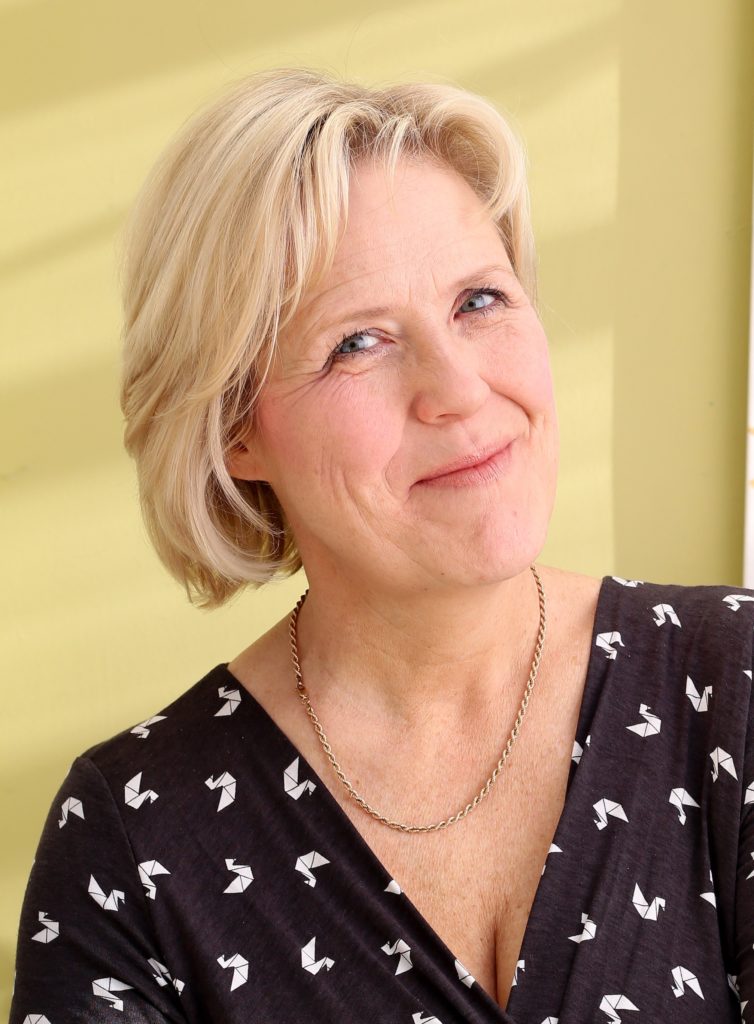Victoria Lambert: Author Boundaries – My Arvon Journey
05 Mar 2018 / General

After 30 years of promising myself an Arvon course, in August 2015 I turned up at The Hurst to join a Starting to Write Fiction course with tutors Ross Raisin and Jane Feaver. Among the brilliant pieces of advice I was offered, both tutors emphasised one thing: doing the work. That meant taking writing seriously, finding a particular time to write, being protective of that time, being serious about the endeavour, developing some self-respect in this area. In fact, Ross’s parting words to me were to ‘just finish the first draft’.
Well, Ross, I did finish the draft of my novel. But then I also wrote three drafts of another book, a non-fiction. And, two and a half years later, I am delighted to say that Boundaries – How to Draw the Line in Your Head, Heart and Home co-authored with psychotherapist Jennie Miller has just been published by HarperCollins.
It’s been every bit as satisfying a process as any aspirant author could hope for. From learning to work with editors to deciding on a cover, the publishing process has been a joy.
All the time I was still working on that novel and to keep up momentum I enrolled on two subsequent weeks with Arvon (Writing a Novel, Totleigh Barton, with Monique Roffey and Fred D’Aguiar in 2016 and a Tutored Retreat, Lumb Bank, with Patricia Duncker and Andrew Cowan in 2017). Both courses were mind-blowing and I’m now nearly through fiction draft two as a result.
When I look back now I still can’t believe my luck at meeting such inspiring writers in the past three years as well as working alongside three sets of engaging and clever fellow students.
Despite this external support, it was obvious that even while I was happily writing a book about general boundaries for life, I needed to create and employ specific author boundaries to make sure all sides of my writing were given the space and attention they needed. Particularly as I was also trying to do the day job at the same time…
So here are a few of my favourite new author boundaries:
1. Carve out the time. For the non-fiction, that meant working one day a week with my co-author for as many months as it took. Working at weekends to catch up on other tasks became a regular occurrence.
2. Set a target. With my time boundary in place for the non-fiction, I set a word count boundary for the fiction: 1,000 words a day written wherever or whenever I could. I didn’t obsess about quality or plot or character – I focused solely on quantity and trusted myself to do the sifting later.
3. Stick to a method. If you write by hand, always have your writing materials in a small rucksack with you. If you use a PC – like me – make sure it is charging every night so whenever you can find the time to write (on a commute or even in a car park while you wait to collect your child from an activity) there are no excuses. Outwit yourself.
4. Food. Going home after an Arvon course can be so sad. Where are the meals? Why is the fridge empty? Whose turn is it to wash up so you can slack off in front of an open fire discussing iambic pentameters and the Archers and drinking red wine? The answer is to be more Arvon, not less. Stick to meal times even when you are writing. Let your mind wander while you wash up. Sometimes this is the best time to let your conscious plot-crazy brain have a rest. Also, eat well. Feed your brain.
5. Exercise. We’re writers not Olympians so I am not advocating a gym membership and wasting time on acquiring a washboard set of abs. But you can start or end a writing session with a 10-minute walk. Stand up and stretch every time you reach a word count, start a chapter, do a spell-check. Matching a specific task to a physical movement will make it easier to stick to.
6. Would Alexandre Dumas have published 277 works if he had been checking his emails every 10 minutes? You need strict boundaries around mobile communications – put your phone on flight mode and out of reach so when you do need to check it, you can stand up and have a stretch too.
7. Make a plan. We learn to plan out our books but sometimes we need to remember to plan a little more widely. What are the five things you would like to achieve in the next five years? Write it down without thinking too hard. Can be big, can be little. These aren’t just about you as a writer but as a rounded person. You will probably have Publish a Book on the list or Finish a Draft. But do you want to move house, have a child, learn to ski or make a driftwood collection? Are some of your ambitions connected? Could they work together rather than conflict with each other? Sometimes, the naming of the thing is the most powerful way to ignite action.
8. Acknowledge yourself as a writer every day. Be mindful of what you are doing.
Boundaries – How to Draw the Line in Your Head, Heart and Home by Jennie Miller and Victoria Lambert (HarperCollins £12.99)
Victoria can be found on Twitter at @lambertvictoria



